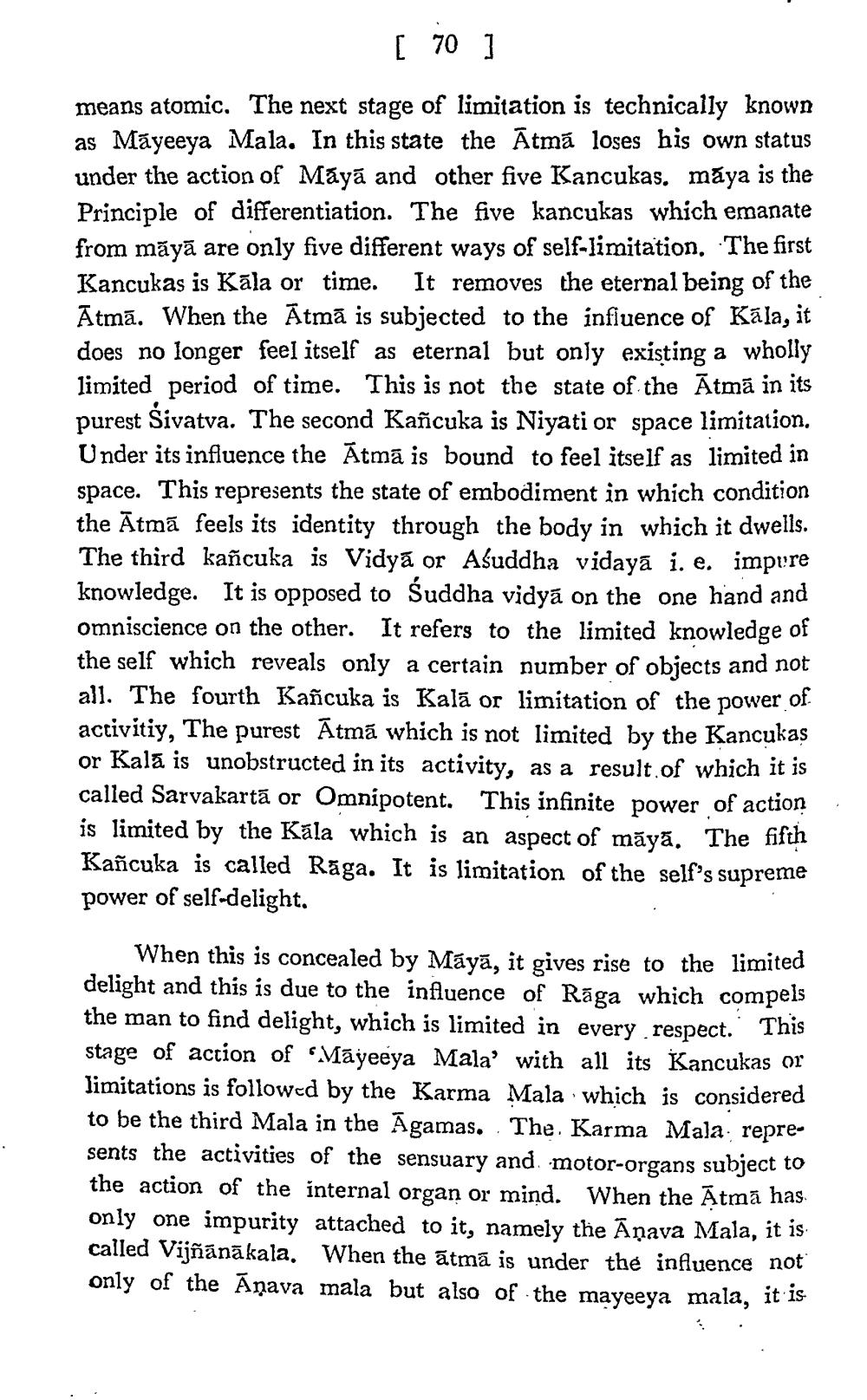________________
[ 70 ]
means atomic. The next stage of limitation is technically known as Māyeeya Mala. In this state the Ātmā loses his own status under the action of Maya and other five Kancukas. máya is the Principle of differentiation. The five kancukas which emanate from māyā are only five different ways of self-limitation. The first Kancukas is Kāla or time. It removes the eternal being of the Ātmā. When the Atmā is subjected to the influence of Kāla, it does no longer feel itself as eternal but only existing a wholly limited period of time. This is not the state of the Atmā in its purest Sivatva. The second Kañcuka is Niyati or space limitation, Under its influence the Ātmā is bound to feel itself as limited in space. This represents the state of embodiment in which condition the Ātmā feels its identity through the body in which it dwells. The third kañcuka is Vidyā or Aśuddha vidaya i. e. impure knowledge. It is opposed to śuddha vidyā on the one hand and omniscience on the other. It refers to the limited knowledge of the self which reveals only a certain number of objects and not all. The fourth Kañcuka is Kalā or limitation of the power of activitiy, The purest Ātmā which is not limited by the Kancukas or Kala is unobstructed in its activity, as a result of which it is called Sarvakartā or Omnipotent. This infinite power of action is limited by the Kāla which is an aspect of māyā. The fifth Kañcuka is called Räga. It is limitation of the self's supreme power of self-delight.
When this is concealed by Máyā, it gives rise to the limited delight and this is due to the influence of Rága which compels the man to find delight, which is limited in every respect. This stage of action of "Māyeeya Mala’ with all its Kancukas or limitations is followed by the Karma Mala which is considered to be the third Mala in the Agamas. The. Karma Mala represents the activities of the sensuary and motor-organs subject to the action of the internal organ or mind. When the Atmā has. only one impurity attached to it, namely the Ānava Mala, it is. called Vijñānākala. When the ātmā is under the influence not only of the Āņava mala but also of the mayeeya mala, it is




